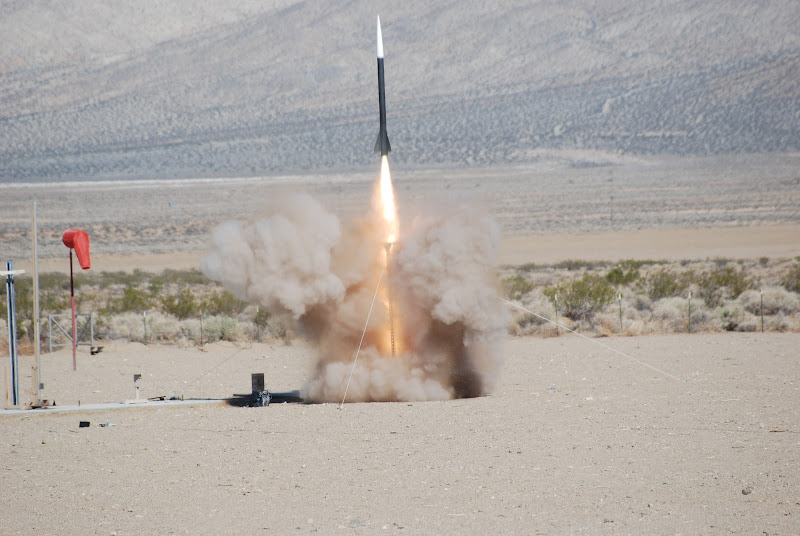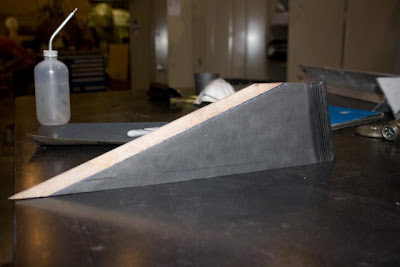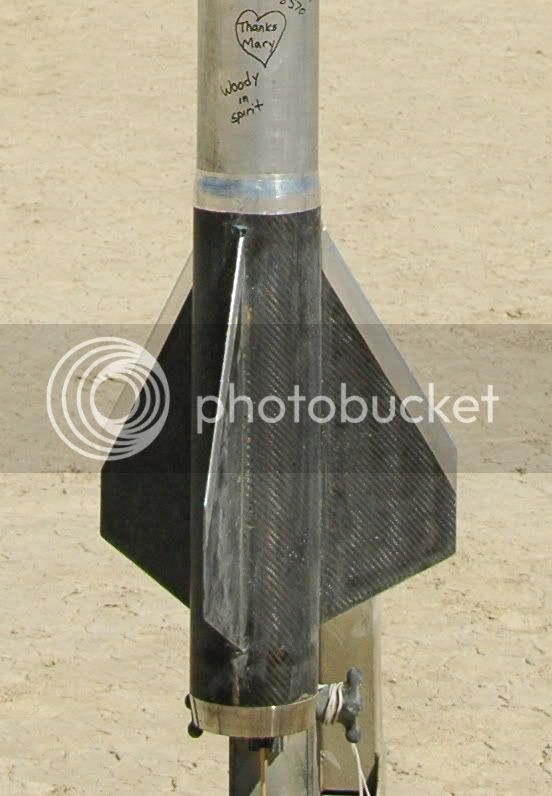Burner
Well-Known Member
- Joined
- Mar 23, 2010
- Messages
- 360
- Reaction score
- 93
Yesterday at the Friends of Amateur Rocketry site I reached a personal altitude record with my 98mm minimum diameter rocket on a research N2600 (~16,200N-s) to 42,305'.
Some stats:
-6:1 Fiberglass von Kármán cone
-Featherweight Raven2 (with perch), BRB RF beacon, BRB GPS (all in the nosecone)
-Primary and redundant apogee charges in surgical tubing
-Single 60" section of FWFG tube
-.093" fins with two layers of uni-directional carbon and one layer of plain weave
-Drougeless apogee with 84" main released via line cutter
-8 pounds empty, ~40 pounds loaded
Some construction shots:



This weekends flight, ignition.

Going up fast.

Time for some cotronics.

Raven Data.

Some stats:
-6:1 Fiberglass von Kármán cone
-Featherweight Raven2 (with perch), BRB RF beacon, BRB GPS (all in the nosecone)
-Primary and redundant apogee charges in surgical tubing
-Single 60" section of FWFG tube
-.093" fins with two layers of uni-directional carbon and one layer of plain weave
-Drougeless apogee with 84" main released via line cutter
-8 pounds empty, ~40 pounds loaded
Some construction shots:



This weekends flight, ignition.

Going up fast.

Time for some cotronics.

Raven Data.







